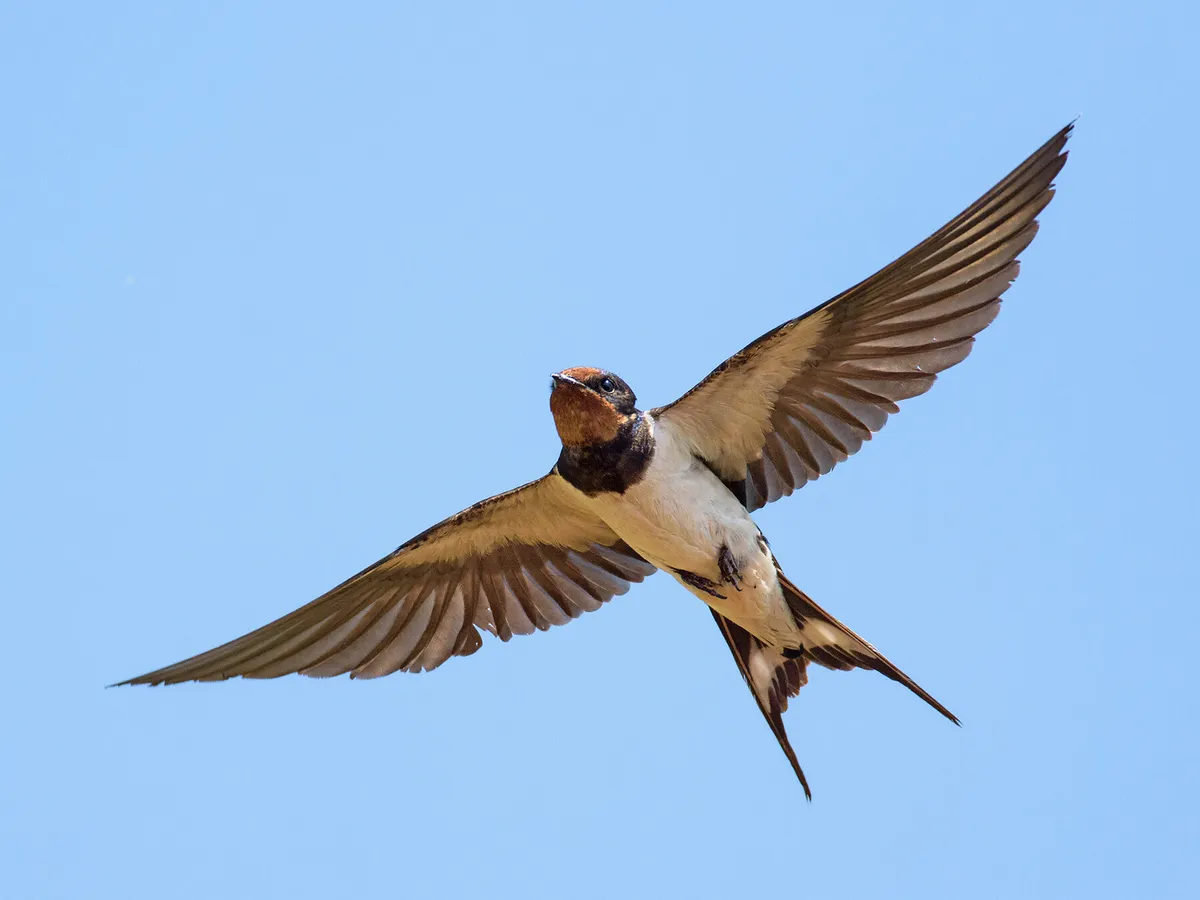Return to Britain in April on trailing tail streamers heralds summer.
Return to Britain in April on trailing tail streamers heralds summer.

What does a Swallow look like?
The swallow is a small, agile bird with characteristic long, forked tail streamers. Adult upperparts and breast band are shiny blue-blacks. The Forehead, chin and most of the throat is a rich blood-red. Underparts are buff-white extending to underwing and under tail coverts. Wings are narrow and elongated. When the tail is spread while braking and turning, it reveals white marks on the outer tail feathers. It has a small bill with a wide mouth, held open as the bird chases insects. The female has shorter tail streamers than the male. Juveniles are similar to adults but have less shiny plumage, a paler head, mottled breast band and no real tail streamers.

What does a Swallow sound like?
The swallow is a noisy bird, with loud calls uttered in flight giving a cheerful “vit”. It has a pleasant, warbling song with some rattling notes, and advertises its presence in Britain from mid-April, heralding summer. The alarm call is a loud, short “chit”.

What does a Swallow eat?
Swallows prefer to look for flying insects over old pasture, agriculture crops, along hedges, woodland edge and over water. They will take insects on the wing. They will also eat mosquitoes and bees.
Where can I see Swallows?
Swallows are summer visitors to Britain and Ireland, mainly seen from April to October. They often roost communally in reed-beds outside of the breeding season, and this can be a good place to look for pre-migration flocks. They are usually found where there is a good supply of small insects such as open pasture with access to water.

Signs and spotting tips
The swallow’s red face is surprisingly difficult to see from a distance, and the bird will appear mostly all dark in flight. The flight is fast and powerful with clipped wing beats.
How does a Swallow breed?
In the UK, swallows have generally started breeding by early June. By July, most young will have left the nest. Parents then raise another brood, followed sometimes by a third. The mud and straw nest is usually built-in recesses inside building and under bridges.
For a full guide on Barn swallow nesting, check out this article.

Swallows Nest
How long do Swallows live for?
The swallow can live for up to 16 years, but the average lifespan is around 2 years.
Do Swallows migrate?
The swallow is migratory, overwintering in the southern half of Africa.
In September and October, swallows gather in their thousands in preparation for their migration. It is the traditional harbinger of summer, returning by mid-April. They return to the same nest site each year. Males arrive first in order to guard their territory.
To find out more about the migration behavior of barn swallows, check out this complete guide.
Threats and conservation
UK conservation status is Green. There are 860,000 breeding territories in the UK.










